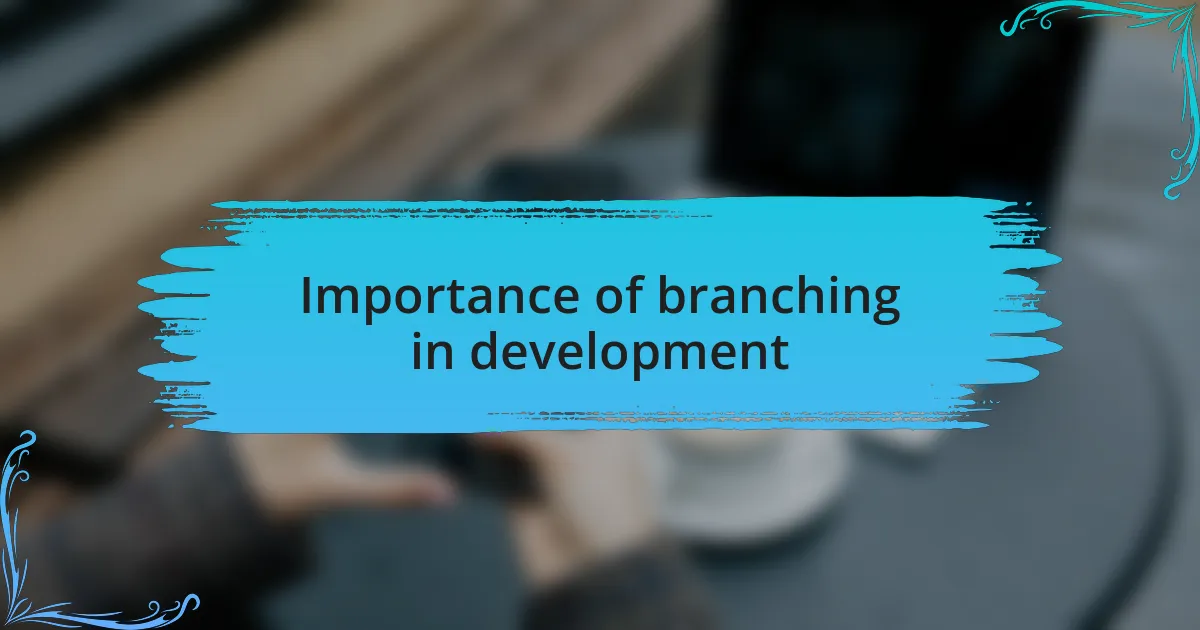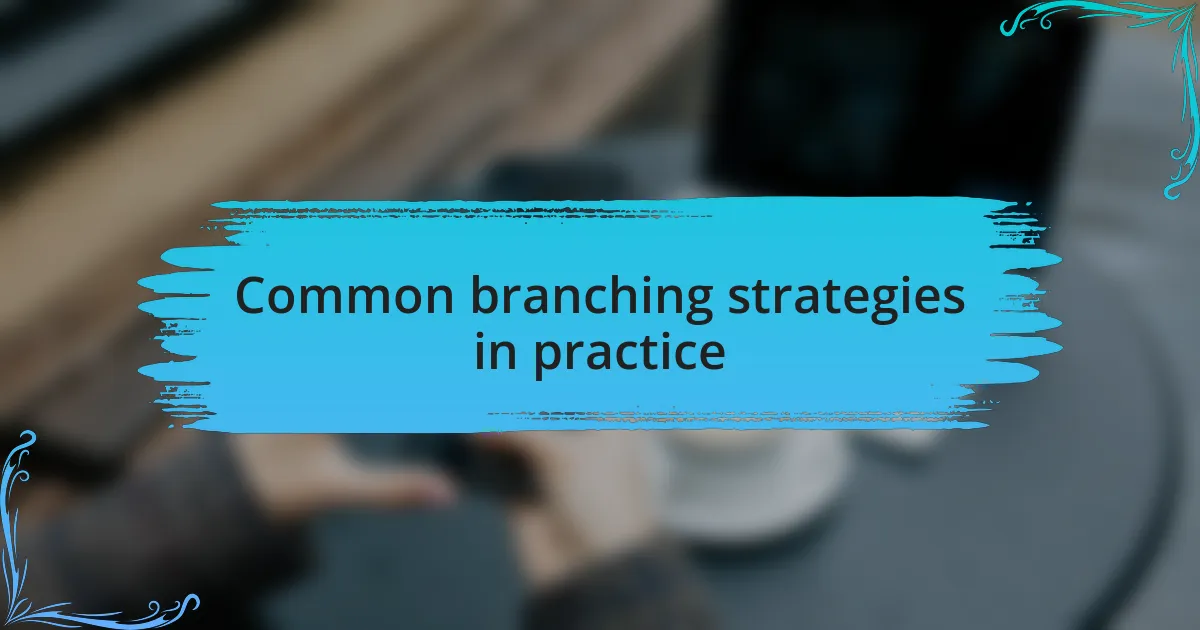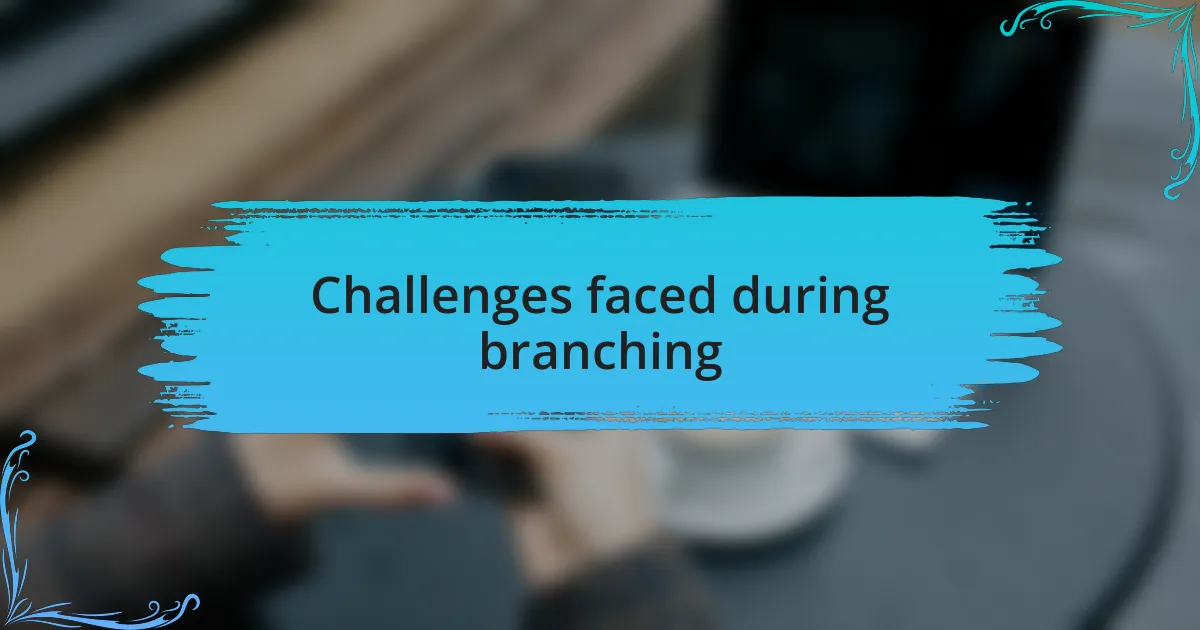Key takeaways:
- The right app development tools can enhance productivity and creativity; continuous learning about new tools is crucial.
- Effective branching practices are essential for code stability and teamwork, allowing developers to work independently and reduce conflicts.
- Utilizing structured strategies like feature branching and Gitflow enhances organization and collaboration during development.
- Establishing clear naming conventions and regular merging is important for managing branches effectively and facilitating team communication.

Understanding app development tools
When it comes to app development tools, I often reflect on my own early experiences, which were a mix of excitement and confusion. Choosing the right tools can feel overwhelming, especially with so many options available. It’s like wandering through a vast tech landscape—what if I told you that the right tool can not only streamline your process but also ignite your creativity?
I vividly remember the first time I explored a new development environment. I was unsure, questioning whether it would truly enhance my efficiency. It did, and that realization was like a light bulb moment. Understanding these tools means considering not just their features but also how they align with your individual workflow. Have you thought about how different environments impact your productivity?
As I dove deeper, I discovered how crucial it is to keep learning about new tools and updates. The tech world evolves at breakneck speed, and staying informed has been both a challenge and a rewarding journey. Isn’t it fascinating how some tools can profoundly influence the way we develop apps, making complex tasks feel surprisingly simple? Embracing that continuous learning mindset can make a significant difference on your app development journey.

Importance of branching in development
Branching in development is fundamental for maintaining clean, organized, and manageable code. I recall the first time I neglected to use branches while collaborating on a large project. The chaos that ensued when trying to merge everyone’s changes was a real eye-opener for me. It made me realize that branching is not just a nice-to-have feature; it’s essential for teamwork and code stability.
When I started using branches effectively, it transformed my development workflow. I’ve found that isolating specific features or fixes allows me to experiment without the fear of breaking anything. Have you ever felt the pressure of making changes directly on the main branch? Trust me, it’s much easier to innovate when you know you can revert to a stable version with just a few clicks.
Moreover, branching enhances collaboration among team members. I remember a project where multiple developers were working on different features simultaneously. By utilizing feature branches, we could work independently without stepping on each other’s toes, which ultimately led to a smoother integration process. Isn’t it empowering to know that effective branching practices can significantly reduce conflicts and improve team dynamics?

Common branching strategies in practice
One common strategy I’ve encountered in practice is the use of feature branching. I vividly remember when I first adopted this approach on a large app project. Each developer worked on their own branch dedicated to a specific feature, which allowed us to focus on our tasks without interference. It was almost liberating to commit my code without worrying about it affecting others’ work. Have you ever enjoyed that kind of freedom in your projects?
Another effective strategy is the Gitflow methodology, which adds another layer of organization. This approach defines specific branches for features, releases, and hotfixes, making it clear where to make changes and how to manage deployments. I can’t express enough how helpful it was during a critical product launch; as bugs were identified, we could patch them quickly through dedicated hotfix branches without disrupting ongoing feature development. Isn’t it fascinating how structured branching can drive the success of your projects?
Then, there’s the practice of using a trunk-based development strategy, which I find particularly interesting. In this method, developers commit their changes directly to a single branch, promoting high frequency of integration. While it may seem risky, I discovered that this approach encourages more collaboration and quick iterations. It felt energizing to see our collective progress in real-time, but it did require a strong culture of communication among team members. Have you ever tried something similar, and if so, how did it affect your workflow?

Best tools for effective branching
When it comes to effective branching, I’ve found that tools like Git and Bitbucket stand out for their robust features and user-friendly interfaces. Git, in particular, allows for seamless collaboration and offers powerful commands to manage branches effortlessly. I remember the first time I used Git in my projects; it felt like having a well-organized toolbox at my fingertips, making me more productive. How has the right tool changed the way you branch and collaborate?
Another tool worth mentioning is GitHub, which not only simplifies version control but also enhances team collaboration through its pull request functionality. This feature has transformed my workflow, enabling easier code reviews and discussions around changes. I once faced a challenge when merging a significant feature that required multiple approvals, and GitHub’s system made the entire process transparent and streamlined. Have you seen how feedback on pull requests can improve the overall quality of your code?
Then there’s SourceTree, which provides a visually intuitive interface for managing Git repositories. I was pleasantly surprised by how it helped me visualize branch histories and merges. It’s incredible how a graphical representation can demystify branching for those who are less comfortable with command lines. Have you tried using visual tools for branching? If not, you might discover a new layer of clarity in your development process.

Challenges faced during branching
When I first started branching in my projects, I underestimated the complexity of managing multiple branches simultaneously. It wasn’t long before I faced merge conflicts that taught me a valuable lesson about diligence. Have you ever sat staring at lines of code, unsure of how to reconcile changes from different branches? I vividly recall that sense of frustration, not realizing how important it is to establish a clear branching strategy upfront.
Another significant challenge I’ve encountered revolves around maintaining consistency across branches. It’s easy to drift into a ‘golden path’ mentality, where one branch becomes the dominant version while others lag behind. I remember losing track of features because they were developed in isolation, leading to problems when we tried to integrate everything. How do you keep your branches aligned and ensure that all developers are on the same page?
Lastly, I’ve noticed that communication is often overlooked yet crucial during the branching process. Early in my career, I failed to synchronize with my team, resulting in duplicated efforts and wasted time. Watching tasks spiral into chaos reinforced the need for regular check-ins and updates. What strategies do you use to foster communication within your team when managing branches? I now prioritize dialogue, knowing that a simple conversation can avert larger issues later on.

Lessons learned from branching experiences
One key lesson I’ve learned from my experiences with branching is the importance of establishing solid naming conventions. I remember the chaos that ensued when branches were named haphazardly – it became nearly impossible to identify which feature was in which branch. This disorganization led to confusion during code reviews, where I often found myself sifting through a maze of branches, asking, “What was this branch even intended for?” Now, I take the time to create a clear structure, which saves not only my time but also prevents future team members from facing the same headaches.
Another insight I gained is that regular merging isn’t just a formality; it’s a lifeline for managing progress. I once delayed merging changes, thinking I could refine my feature without interruption. However, that isolation only compounded problems later on. When I finally decided to merge, the resulting conflicts were overwhelming. From that experience, I’ve discovered that early and frequent integrations foster smoother workflows and allow for more manageable adjustments.
Lastly, one of the most underrated lessons is the significance of retrospectives after each branching cycle. I used to think we could just move forward after a release, but reflecting on what worked and what didn’t has proven invaluable. I recall one project where we celebrated our victories but neglected to analyze a frustrating merge conflict. By initiating discussion post-project, I’ve encouraged my team to identify and address issues, creating a culture of continuous improvement. How often do you ask your team, “What can we learn from this iteration?” Embracing this practice can fundamentally change how we approach future branching challenges.